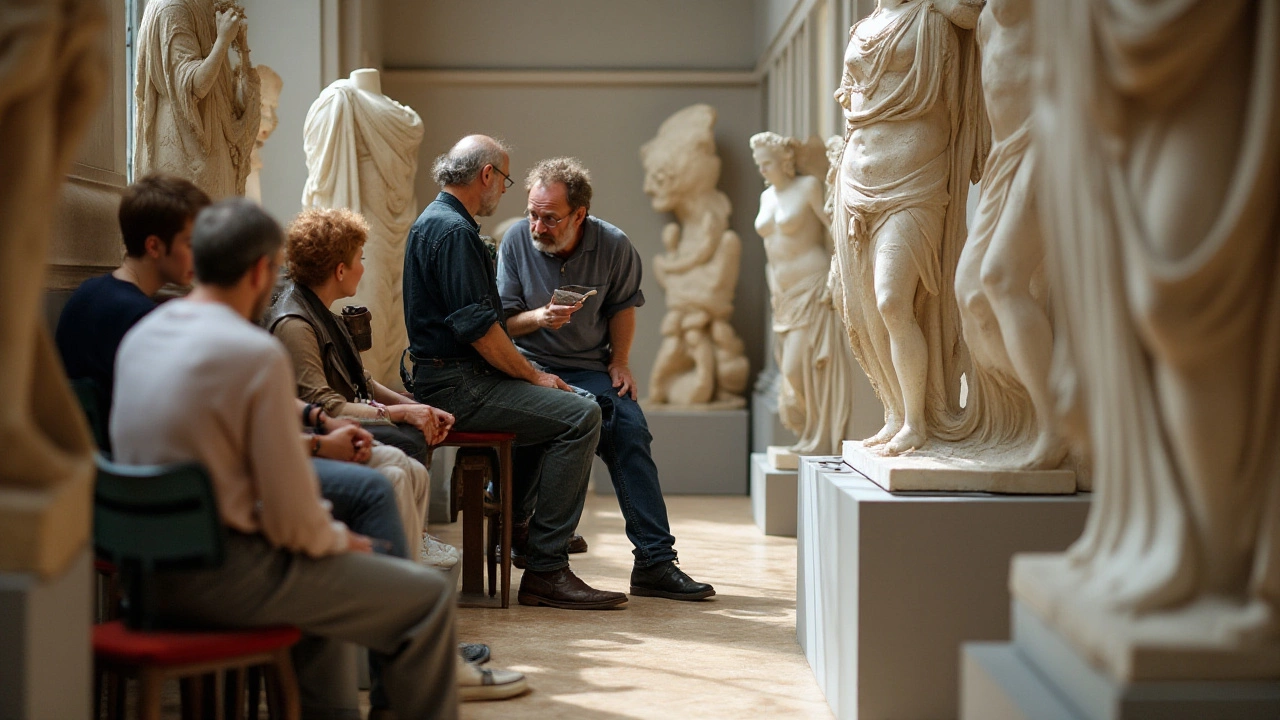Sculptors – Everything You Need to Get Started
Thinking about shaping clay, wood, or even recycled junk into art? You don’t need a fancy studio or a huge budget to begin. All you need is a bit of curiosity, a couple of basic tools, and the right guidance. Below you’ll find the most useful tips for anyone calling themselves a sculptor, whether you’re just testing the water or looking to upgrade your craft.
Easy Projects for New Sculptors
Start small. A simple teapot, a mask, or a basic animal form can be finished in an afternoon and still give you a solid feel for the medium. Clay is the go‑to for beginners because it stays workable and can be reshaped without committing to a final form. Try rolling a ball, flattening it, and then pulling up a simple bowl—this teaches you how to control thickness and avoid cracks later.
If you prefer something less messy, try carving a wooden spoon or a small block of soft pine. A cheap carving knife and a sanding block are enough. Sketch your idea on paper first, then transfer the outline onto the wood with a pencil. Remove the excess wood slowly—don’t rush. The feeling of seeing the shape emerge is what keeps many sculptors coming back.
For an ultra‑budget option, look around your home for recyclable items: soda cans, old toys, or broken ceramics. Glue, wire, and hot‑glue sticks can hold pieces together while you work out the composition. This approach not only saves money but also sparks creative thinking because you’re forced to work with what you have.
Saving Money on Sculpture Materials
Materials can eat up your wallet fast, but there are ways to keep costs low. Buying plaster in bulk from a hardware store is often cheaper than specialty art plaster. Mix it yourself with water and a little glue for a stronger finish. When using clay, consider air‑dry clay for small projects; it cures without a kiln and costs a fraction of polymer clays.
Second‑hand shops are gold mines for tools. A used rotary tool, a set of chisels, or even an old sanding machine can be found for pennies. Clean them up, give them a quick oiling, and they’ll work just as well as new gear. Don’t overlook community art centers—many offer tool libraries you can borrow from for a day or a week.
Finally, track your material usage. Measure how much clay you actually need for each piece and cut waste. Recycle leftover material by grinding it down and remixing it into new batches. Over time, you’ll see a noticeable drop in expenses and a boost in your ability to experiment.
Whether you’re chasing a new idea or refining a classic technique, the key to growth is consistent practice and smart material choices. Keep a sketchbook of project ideas, note what worked, and revisit past pieces to see how you could improve them. The sculptor’s journey is a mix of hands‑on work and thoughtful planning—both are within reach without breaking the bank.
Ready to get your hands dirty? Pick a simple project, gather a few inexpensive tools, and start shaping. The more you create, the clearer your artistic voice will become.

6 Nov 2024
The question of who reigns as the best sculptor of all time is one that may stir debate across generations. While different eras have their acclaimed art figures, the criteria such as innovation, technique, and influence help evaluate their contributions. This article explores historical and contemporary sculptors, examining their achievements and their profound impact on the world of art. From classical masterpieces to avant-garde creations, discover the enchanting stories behind some of history's most illustrious sculptors.
Continue reading...
